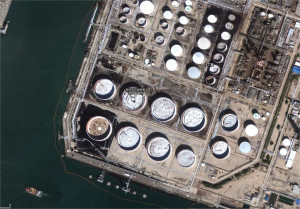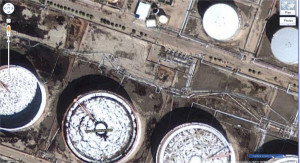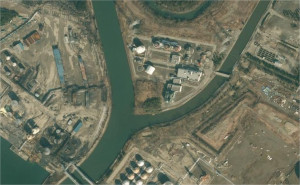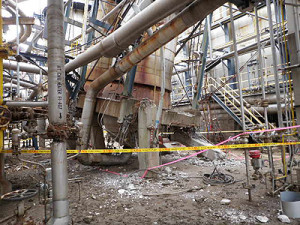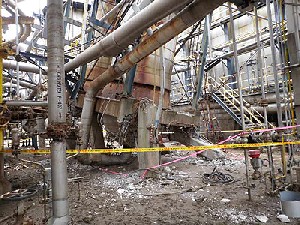A major earthquake (Mw = 9) hit the north-east of Japan at 2.46 pm. The ground acceleration measured in the industrial port of Sendai, 140 km from the epicentre, was between 3.15 and 4 m/s². A slightly overhanging port refinery was hit by a tsunami at 3 pm with a wave height of 2 to 3 m (wave height of 6 to 7 m in the port). This first submersion was followed by a succession of waves until 3.50 pm. A general subsidence of the site of 40 cm and an erosion of the land along the sea shore were observed. Shortly before the arrival of the tsunami, most of the 200 employees took shelter on high ground before evacuating the site in the evening, but 4 employees perished during the inspection of the units after the first tremors (inspection by the manager of each unit as provided for in the procedures). They were not able to reach the high evacuation points in time and were swept away by the tsunami.
The earthquake and its aftershocks weakened and partially destroyed the foundations and concrete bases of the reactors and several exchangers, as well as the buckling of several chimneys. The tsunami quickly submerged some of the unit control rooms and the ground floor of the administrative buildings. The waves overturned 8 LPG cars and swept away cars that hit and damaged the support structures of the catalytic cracking installations.
Numerous infrastructures were affected: retaining walls were swept away, hydrocarbon transport pipes were lifted, twisted or torn off, products were spilled into the retaining tanks, etc. Although most of the storage tanks resisted thanks to the protective dykes, huge hydrocarbon (HC) stains revealed massive pollution of the port after a 100,000 m³ tank of crude oil on the edge of the estuary to the north-west of the site was gutted. The reflux washed the soil and displaced small oil and bitumen tanks, causing the shell/bottom connection to break after some tanks tilted or as a result of excessive hydrostatic pressure. A fire broke out at 9.25 pm at the road/rail loading station. The operator, who lost 8 fire-fighting machines, and the local fire brigade were unable to intervene for 48 hours due to the aftershocks of the earthquake and the risk of further tsunamis, forcing the staff to be evacuated. The fire affected some tanks, destroyed the loading area, including 65 wagons, and spread to the neighbouring LPG tank farm, which burned for four days. The loss of utilities led to the shutdown of the cryogenic system for cooling the refinery’s gas spheres. Intensive flaring of the gases allowed the pressure build-up of the gas capacities to be regulated.
The fire was brought under control on 15 March at 2.30 pm. Damage and operating losses were estimated at 920 million euros, including more than 500 million euros in repairs. Another refinery was hit in Tokyo Bay (ARIA 40,256), and four others, which were only slightly damaged, resumed their activities after a four-day shutdown.
Refinery transfer and storage operations restarted 2 months after the earthquake, but the severely damaged refinery units did not partially restart until January 2012, and then 100% in March 2012.
The operator is planning several measures:
- raising the height of the watertight doors and windows in the electrical rooms,
- placing the instrumentation, equipment and control systems more than 4 m above ground level and more than 8 m away from sensitive documents, emergency equipment and computer servers.
A new tsunami alert procedure was drawn up, eliminating the round of checks to ensure that the installations were safe.



